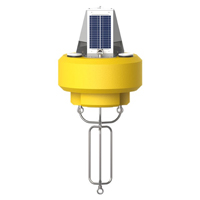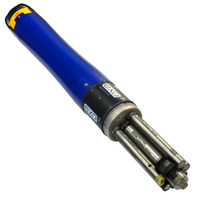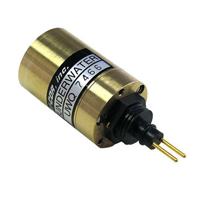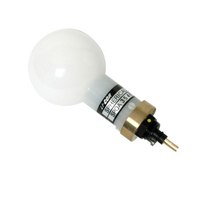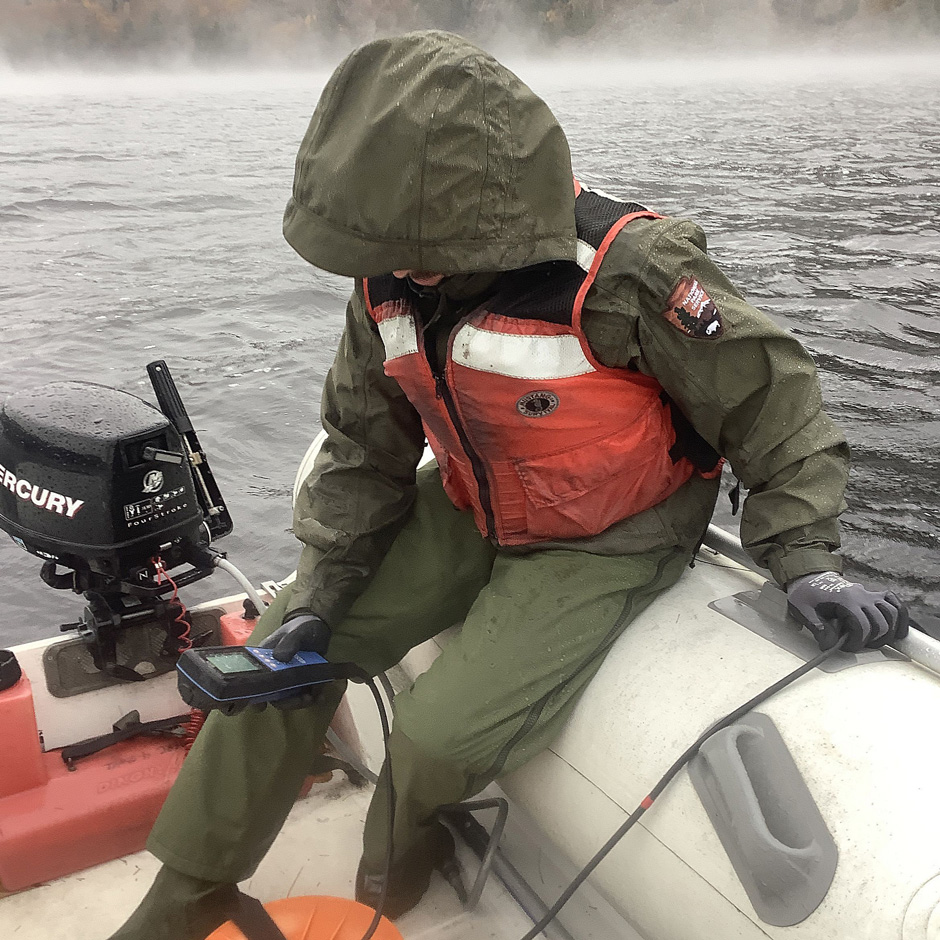 The United States National Park Service (NPS) is known for managing scenic landscapes and historic sites across the U.S. The parks’ natural and cultural resources attract millions of visitors annually, which are important to local communities. One of the primary goals of the NPS is to protect and preserve these parks from pollution, human influence, and climate change.
The United States National Park Service (NPS) is known for managing scenic landscapes and historic sites across the U.S. The parks’ natural and cultural resources attract millions of visitors annually, which are important to local communities. One of the primary goals of the NPS is to protect and preserve these parks from pollution, human influence, and climate change.
Bill Gawley, a biologist at Acadia National Park for the past 30 years, is part of these initiatives, managing the park’s air and water resource programs. The Jordan Pond buoy is one of many monitoring systems active in the park, and Gawley and his team have maintained the buoy and analyzed data since its initial deployment in 2013.
Challenge: Real-Time and Accessible Data for Jordan Pond Analysis
Because the park was created with the intention of preserving and protecting the region’s natural and cultural resources, Gawley’s work is essential to the mission of Acadia. The park receives millions of visitors a year and is renowned for its pristine resources, which have been studied for decades.
Contributing to long-running historical datasets is particularly important for the environmental monitoring initiatives in Acadia as the long-term data pool allows scientists to detect the subtle changes the resources have undergone due to climate change and pollution. Additionally, data from park monitoring systems are used to show the influence of various environmental policies on the environment.
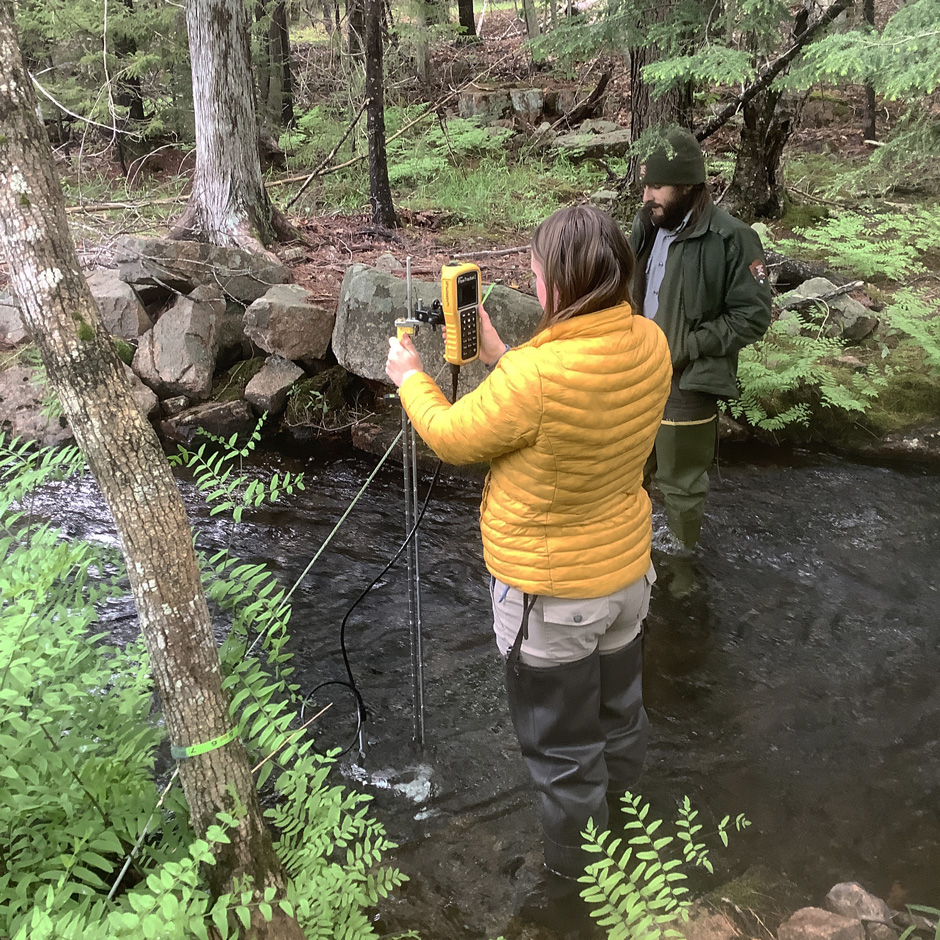 Gawley explains, “We’re lucky that we can monitor the stressors, like precipitation pH at our air monitoring station as well as the water quality of park lakes and streams—so we can assess both the level of pollution that’s coming in, and also the effect that it is having on the water. Studies conducted in a lot of other places don’t have the luxury of being able to collect both those datasets in the same location.”
Gawley explains, “We’re lucky that we can monitor the stressors, like precipitation pH at our air monitoring station as well as the water quality of park lakes and streams—so we can assess both the level of pollution that’s coming in, and also the effect that it is having on the water. Studies conducted in a lot of other places don’t have the luxury of being able to collect both those datasets in the same location.”
Limnologists in the U.S. and abroad are also invested in the environmental data gathered in the park due to its long data history and relatively pristine ecosystems that are largely protected from many anthropogenic influences. In order to meet the long-term and continuous data needs of park managers, researchers, and policymakers, multiple monitoring systems are necessary.
Solution: Multifaceted Monitoring in Jordan Pond
To gather comprehensive data on conditions in the park, Acadia hosts a variety of monitoring programs: monthly lake and stream water monitoring, a high-resolution data buoy deployed on Jordan Pond, an air quality monitoring station for gaseous pollutants, atmospheric deposition, and visibility, and a Vaisala multiparameter weather station located at the Jordan Pond House, a park concession-operated restaurant.
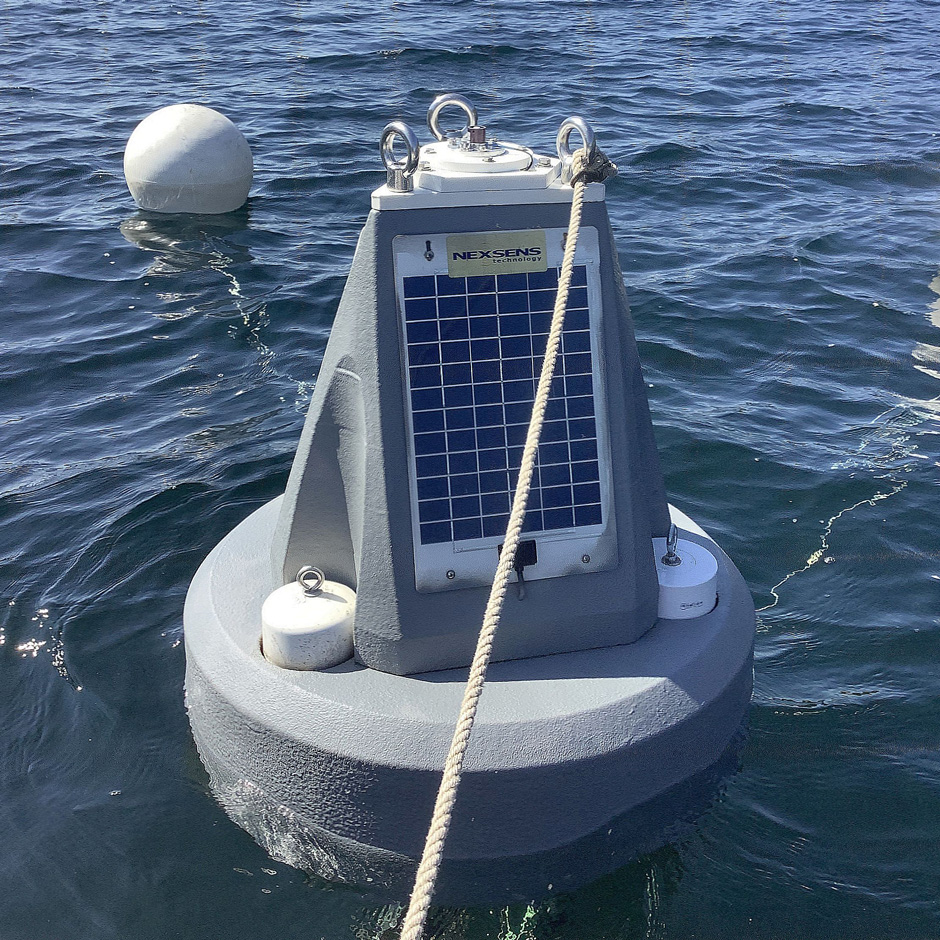 Most of the water monitoring efforts are conducted through discrete sampling, which gathers data representative of conditions during the monitoring visit but fails to map the dynamics of the water body occurring between visits. The Jordan Pond buoy and weather station continuously gather data, recording measurements every 15 minutes, creating a more comprehensive data pool to analyze over time.
Most of the water monitoring efforts are conducted through discrete sampling, which gathers data representative of conditions during the monitoring visit but fails to map the dynamics of the water body occurring between visits. The Jordan Pond buoy and weather station continuously gather data, recording measurements every 15 minutes, creating a more comprehensive data pool to analyze over time.
To better understand the conditions connected to browning and other water quality changes, the NexSens data buoy is equipped with a YSI EXO2 sonde, a 15-meter string of temperature sensors, and LiCor PAR sensors to measure light attenuation. The sonde monitors fluorescent dissolved organic matter (fDOM) as a surrogate for dissolved organic carbon, dissolved oxygen, temperature, specific conductance, pH, and total algae (chlorophyll a and phycocyanin).
Benefits: Comprehensive Data Collection and Data Sharing
The high-resolution data from the meteorological station and water quality buoy allow scientists like Gawley to link the cause and effect of changes in lake conditions, including algal productivity, since water quality can respond very rapidly to weather conditions. Current water and weather conditions are available in near real time to the public on the project website, and the close to 1,400 measurements collected each day greatly enhance the utility of the decades-old lake monitoring program.
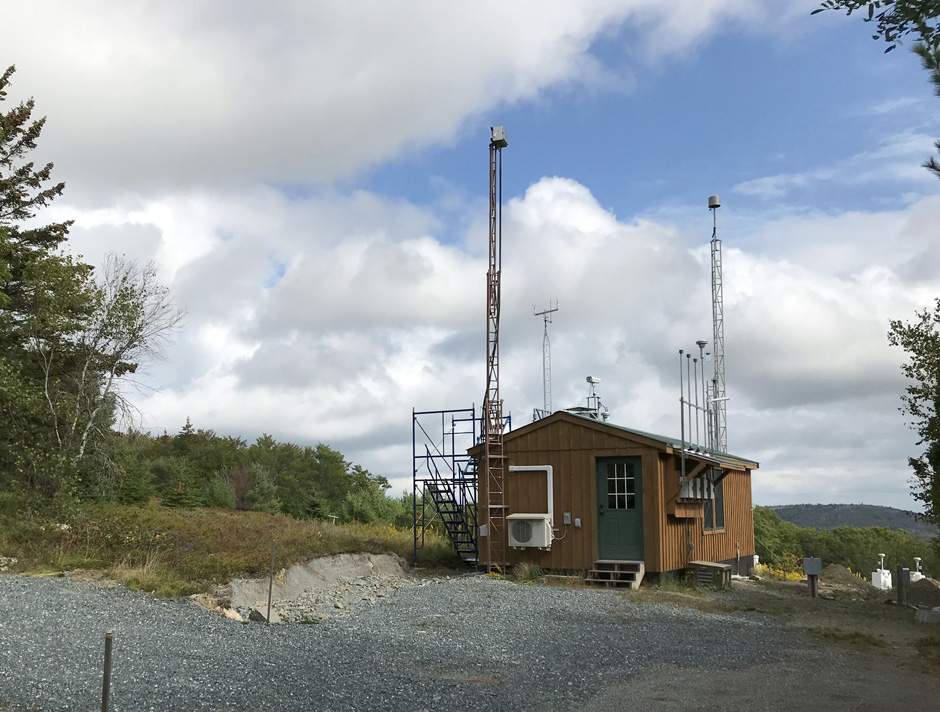 Collaboration is the key to successful monitoring and research efforts. Parks like Acadia have many stakeholders who are equally invested in the health of the natural resources. Federal, state, and municipal agencies, research groups, local residents, and visitors to the park are all interested in and utilize the data gathered by the program. Research findings and monitoring data from other agencies are equally valuable to park scientists and managers.
Collaboration is the key to successful monitoring and research efforts. Parks like Acadia have many stakeholders who are equally invested in the health of the natural resources. Federal, state, and municipal agencies, research groups, local residents, and visitors to the park are all interested in and utilize the data gathered by the program. Research findings and monitoring data from other agencies are equally valuable to park scientists and managers.
The Bottom Line
A longstanding collaboration with researchers from the University of Maine Climate Change institute provided the inspiration for the Jordan Pond project, and financial support from the non-profit partner organization Friends of Acadia (FOA) made it a reality.
Gawley elaborates on this relationship, “Friends of Acadia has a long history of fundraising and advocacy efforts for us, and they’ve contributed millions of dollars over the years to different park projects like carriage road restoration and trail restoration and the Island Explorer bus system.”
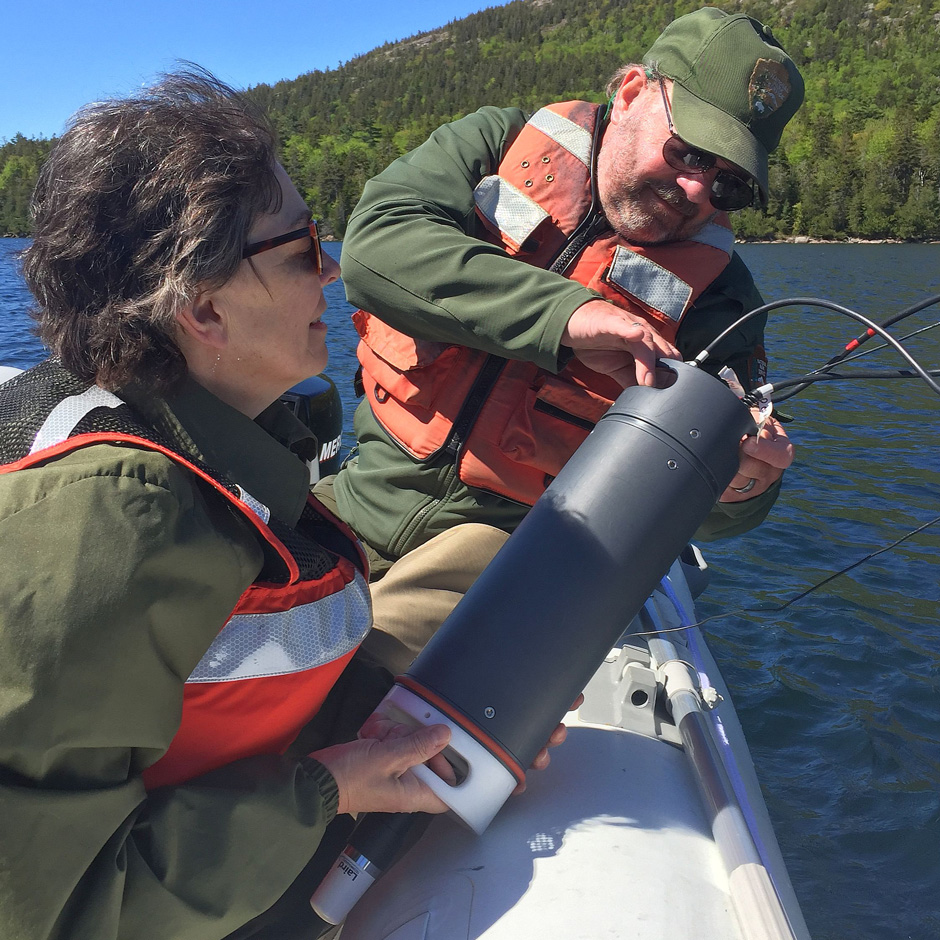 The Friends of Acadia Wild Acadia initiative funded the purchase of the NexSens buoy, which was paid in part by a grant from Canon, USA, and FOA continues to support the annual operating costs. The yearly funding includes a stipend for a student who serves in an “Aquatic Scientist” position to assist with fieldwork, data management, analysis, and outreach for the project.
The Friends of Acadia Wild Acadia initiative funded the purchase of the NexSens buoy, which was paid in part by a grant from Canon, USA, and FOA continues to support the annual operating costs. The yearly funding includes a stipend for a student who serves in an “Aquatic Scientist” position to assist with fieldwork, data management, analysis, and outreach for the project.
“We’ve been able to get a good, steady data capture that informs both park management needs and academic research efforts. And we’ve been fortunate enough to start to see what’s happening in those time spans in between our monitoring visits and get a better idea of the really subtle changes that are occurring in the lake,” states Gawley.
The program’s success serves as a good example of how nonprofits and government agencies can work together to understand and promote good stewardship of natural resources and show the success of environmental policy changes in protected environments like Acadia.
Gawley explains, “It’s a good story to tell, and it provides a little bit of hope for the future. We’re in an era when there’s not always a lot of good news being communicated.”
Equipment
The NexSens CB-450 Data Buoy is designed for deployment in lakes, rivers, coastal waters, harbors, estuaries and other freshwater or marine environments.
The YSI EXO represents the next generation of water quality instruments from YSI. The EXO2 sonde includes six sensor ports and a central anti-fouling wiper option.
The LI-COR LI-192 Underwater PAR Sensor Quantum sensor accurately measures photosynthetically active radiation (PAR) in freshwater or saltwater environments.
The LI-COR LI-193 Underwater Spherical Quantum sensor accurately gives an added dimension to underwater PAR measurements.

